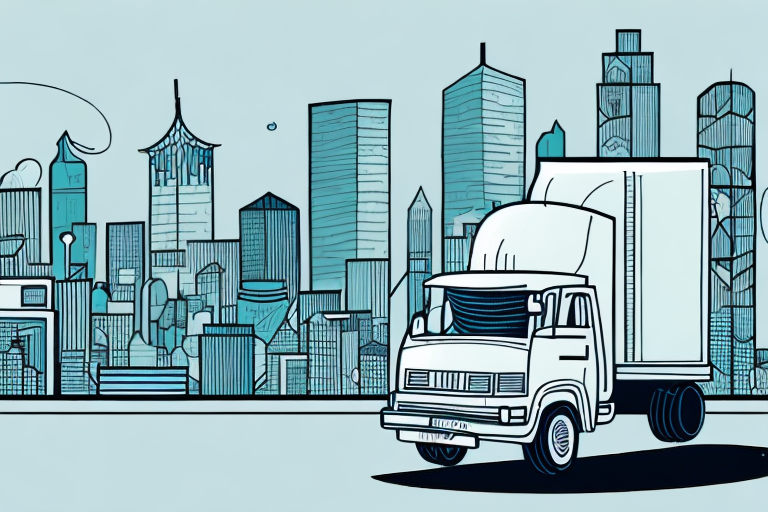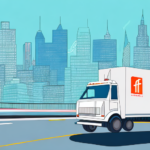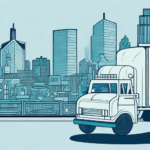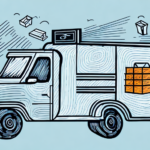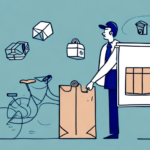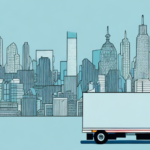The Benefits of Last Mile Delivery for Businesses
When it comes to running a business, providing efficient delivery to your customers is crucial. This is where last mile delivery comes into play. Last mile delivery is the final step of the delivery process that takes place from a distribution center to the customer's doorstep. In recent years, last mile delivery has become increasingly important for businesses due to changing consumer preferences and increasing competition. In this article, we'll explore the many benefits of last mile delivery and how it can help businesses improve their bottom line.
Understanding Last Mile Delivery and Its Importance for Businesses
Last mile delivery is a critical part of the supply chain that can make or break a business. It involves delivering goods to the customer's doorstep in the shortest possible time frame. The importance of last mile delivery has increased in recent years as online shopping has become more prevalent, and customers increasingly expect faster and more convenient delivery.
According to a report by McKinsey & Company, last mile delivery can account for up to 40% of the total delivery cost, and poor last mile delivery can negatively impact customer satisfaction, leading to decreased loyalty and a detrimental effect on the bottom line.
The Last Mile Problem
One of the biggest challenges in last mile delivery is the issue of "the last mile problem." This refers to the difficulty of delivering goods to customers in urban areas, where traffic congestion, limited parking, and other logistical challenges can make it difficult for delivery drivers to reach their destination quickly and efficiently. To address this problem, many businesses are turning to innovative solutions such as drone delivery, electric bikes, and even robots to make last mile delivery more efficient and cost-effective.
Environmental Impact
Another important factor to consider in last mile delivery is the environmental impact. With the rise of e-commerce, there has been a corresponding increase in the number of delivery vehicles on the road, leading to higher levels of air pollution and carbon emissions. To address this issue, many businesses are exploring alternative delivery methods such as electric vehicles and cargo bikes, which can help reduce their carbon footprint and promote sustainability.
How Last Mile Delivery Can Boost Your Business Profits
Last mile delivery is not just about meeting customer expectations but also a way to improve a business's profitability. By offering reliable and fast delivery, businesses can create a competitive advantage, increase sales, and boost customer retention rates.
A study by Capgemini found that customers are willing to pay a premium for same-day or instant delivery options, which can increase revenue for a business.
Cost Savings
In addition to increasing revenue, last mile delivery can also help businesses save costs. By optimizing delivery routes and using technology such as GPS tracking and automated dispatching, businesses can reduce fuel and labor costs. This can lead to significant savings, especially for businesses with a large delivery network.
Data-Driven Insights
Furthermore, last mile delivery can also provide valuable data insights for businesses. By tracking delivery times, customer feedback, and other metrics, businesses can identify areas for improvement and make data-driven decisions to optimize their delivery operations. This can lead to better customer satisfaction and increased profitability in the long run.
The Role of Technology in Improving Last Mile Delivery
Technology is playing a vital role in improving last mile delivery for businesses. With the use of GPS tracking, real-time tracking, and route optimization software, businesses can ensure faster and more efficient delivery. Delivery companies can also use predictive analytics to anticipate demand, optimize routing, and reduce delivery time.
Enhancing Delivery Accuracy
In addition to these benefits, technology is also helping to improve the accuracy of last mile delivery. With the use of barcode scanning and electronic signature capture, businesses can ensure that packages are delivered to the correct recipient and that proof of delivery is recorded. This helps to reduce the risk of lost or misdelivered packages, which can be costly for businesses and frustrating for customers.
Flexible Delivery Options
Furthermore, technology is enabling businesses to offer more flexible delivery options to customers. With the use of mobile apps and online portals, customers can track their deliveries in real-time, receive notifications about delivery times, and even choose alternative delivery locations or times. This helps to improve the overall customer experience and can lead to increased customer loyalty and repeat business.
The Challenges of Last Mile Delivery and How to Overcome Them
Last mile delivery can present several challenges for businesses, including traffic congestion, unexpected delivery addresses, and scheduling issues. To overcome these challenges, businesses can invest in:
- Route optimization software
- Hiring local couriers
- Using innovative delivery options such as drones or autonomous vehicles
Package Theft
Another challenge of last mile delivery is the issue of package theft. With the rise of online shopping, package theft has become a common problem, especially in urban areas. To combat this, businesses can use secure delivery lockers or require signature confirmation upon delivery.
Environmental Concerns
In addition, last mile delivery can also have a negative impact on the environment due to the emissions from delivery vehicles. To address this issue, businesses can explore eco-friendly delivery options such as electric or hybrid vehicles, or even bicycle couriers in urban areas.
Top Strategies for Effective Last Mile Delivery Management
To ensure effective last mile delivery management, businesses should focus on efficiency, transparency, and flexibility.
Efficiency
Efficient routing and dispatching of orders and tracking of deliveries are essential to ensure timely and accurate delivery.
Transparency and Communication
Communication with customers is also essential to provide transparency and flexibility in delivery options, including pickup locations, time slots, and delivery preferences.
Optimizing Technology Use
Another important strategy is to optimize the use of technology, including:
- Route optimization software to plan the most efficient delivery routes
- Real-time tracking systems to monitor the progress of deliveries
- Data analytics to identify patterns and trends in delivery performance
This allows businesses to make data-driven decisions to improve their last mile delivery operations.
The Impact of Last Mile Delivery on Customer Satisfaction and Loyalty
Last mile delivery has a significant impact on customer satisfaction and loyalty. By ensuring fast, reliable, and convenient delivery, businesses can increase customer satisfaction and loyalty.
According to a study by Convey, 85% of customers said they would switch to a competitor if they experienced a delivery problem, highlighting the importance of getting last mile delivery right.
Financial Implications
Furthermore, last mile delivery can also impact a business's bottom line. Inefficient delivery processes can lead to increased costs, such as missed delivery windows, failed deliveries, and returns. By optimizing last mile delivery, businesses can reduce these costs and improve their overall profitability. This is especially important in today's competitive e-commerce landscape, where customers have come to expect fast and reliable delivery options.
Case Studies: Companies that have Successfully Implemented Last Mile Delivery
Several companies have successfully implemented last mile delivery, improving their customer experience and bottom line.
Amazon
Amazon has invested heavily in delivery infrastructure and developed innovative solutions such as Amazon Prime, which offers free and fast delivery to its customers.
Instacart
Instacart, a grocery delivery service, has partnered with major grocery chains to provide same-day delivery to customers. Additionally, they have developed a subscription service for frequent users, allowing them to compete with traditional brick-and-mortar grocery stores by offering a convenient alternative.
Uber Eats
Uber has entered the last mile delivery market with Uber Eats, a food delivery service that partners with local restaurants to provide fast and reliable delivery to customers. This has allowed Uber to diversify its business and expand into new markets while providing a valuable service to customers.
Tips for Choosing the Right Last Mile Delivery Provider for Your Business
Choosing the right last mile delivery provider is essential for businesses to ensure efficient and reliable delivery. Here are some tips to consider:
- Experience and Expertise: Check their experience and expertise in last mile delivery.
- Reputation: Look into their reputation through reviews and testimonials.
- Delivery Options: Ensure they offer the delivery options that best suit your business needs.
- Customer Service: Evaluate the quality of their customer service.
- Cost and Timeframes: Consider the cost and delivery timeframes offered by the provider.
Technology and Tracking Capabilities
Another important factor is the provider's technology and tracking capabilities. A provider with advanced technology can offer real-time tracking and updates, helping businesses keep their customers informed about the delivery status. Additionally, technology can help streamline the delivery process and reduce the risk of errors or delays.
Flexibility and Adaptability
Finally, consider the provider's flexibility and ability to handle unexpected situations. A good last mile delivery provider should have contingency plans for unforeseen circumstances such as traffic, weather, or other disruptions. They should also be able to adapt to changes in delivery requirements or schedules and be responsive to any issues or concerns that may arise during the delivery process.
Future Trends in Last Mile Delivery and Their Implications for Businesses
Last mile delivery is expected to continue evolving, driven by changing customer demands and new technologies. Key trends include:
- Drones and Autonomous Vehicles: Increased use for faster and more sustainable delivery.
- Electric Vehicles: Adoption of electric vehicles to reduce carbon emissions.
- 5G Technology: Enhanced real-time tracking and communication with customers.
- Eco-Friendly Delivery Options: Rise of bike couriers and electric cargo bikes to navigate urban areas efficiently.
Businesses that embrace these trends will be more likely to stay ahead of the competition and provide efficient and cost-effective delivery solutions.
Sustainability and Social Responsibility
There is also a growing trend towards eco-friendly and socially responsible last mile delivery. Customers are increasingly concerned about the environmental impact of delivery services and are looking for companies that prioritize sustainability. Implementing sustainable delivery practices not only appeals to environmentally conscious customers but also contributes to a more sustainable future.
Conclusion
Last mile delivery is a critical component of the supply chain that can make or break a business. By investing in efficient last mile delivery solutions, businesses can improve their bottom line, increase customer satisfaction and loyalty, and gain a competitive advantage. Embracing technology, innovating delivery options, and focusing on customer experience are the keys to successful last mile delivery management.
Additionally, it is important for businesses to consider the environmental impact of their last mile delivery operations. With the rise of e-commerce, there has been a significant increase in the number of delivery vehicles on the road, leading to higher carbon emissions and traffic congestion. Implementing sustainable delivery practices, such as using electric vehicles or optimizing delivery routes, can not only reduce the environmental impact but also improve the overall efficiency of the delivery process.

